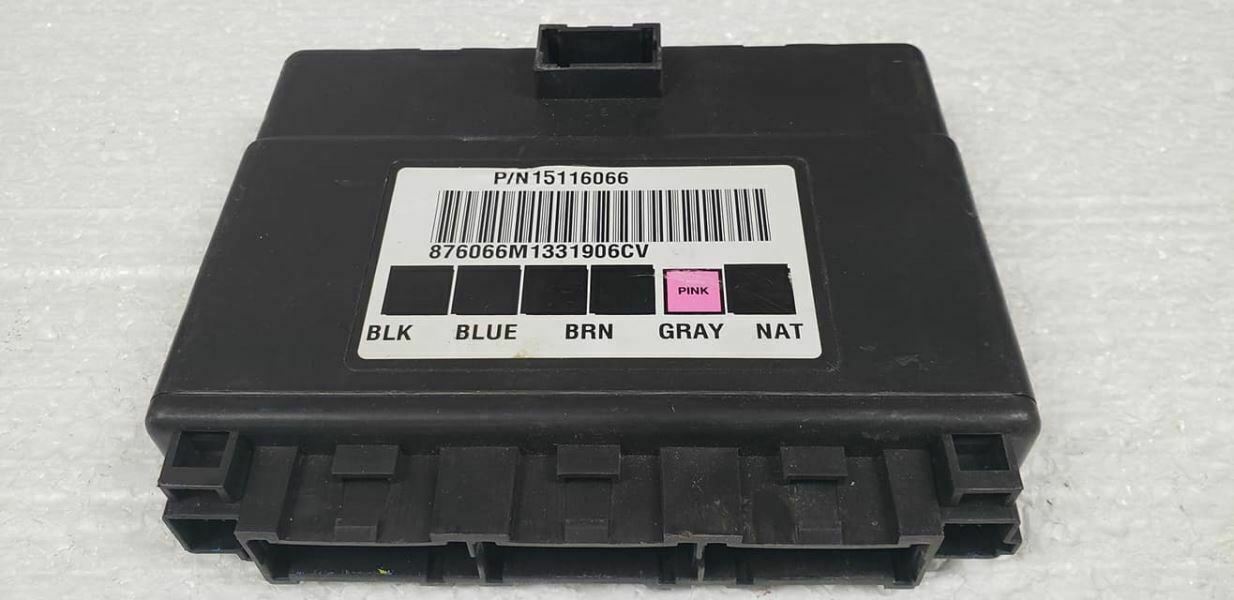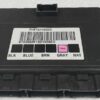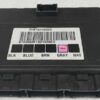Solve Your Truck’s Electrical Headaches for Good
If you’re dealing with baffling electrical issues in your 2003-2007 GMC Sierra 1500, you know the frustration. One day the power windows work, the next they don’t. The HVAC blower motor has a mind of its own, or a persistent airbag light refuses to go away. These aren’t separate problems; they’re classic symptoms of a failing Body Control Module (BCM), the central command center for your truck’s body electronics. This replacement BCM, identified by part number 15137394 and other interchangeable numbers, is the definitive solution, offered with our expert cloning service to make your repair simple and permanent.
Case Study: A Tricky Diagnosis
I remember a 2006 Sierra 1500 that came into my shop with a laundry list of complaints from the owner. The radio would cut out, the driver’s side door lock was intermittent, and the security light would flash, sometimes causing a no-start condition. The owner had already replaced the battery and checked fuses. After connecting my scan tool, I saw a dozen communication codes (U-codes) pointing to a network failure. In my 20+ years of experience, a chaotic flood of unrelated electrical faults almost always points to the BCM. We performed our cloning service on a new module, and within 15 minutes of installation, every single issue was resolved. This is the kind of straightforward fix we provide.
Is Your Sierra Showing These Telltale Signs?
A failing BCM doesn’t usually die silently. It will give you warnings. If you’re experiencing any of the following, it’s highly likely your BCM is the culprit:
- ✔ Erratic or non-functional power windows, door locks, or interior/exterior lights.
- ✔ HVAC system problems, such as the blower motor not working or being stuck on one speed.
- ✔ An illuminated airbag warning light, often accompanied by Diagnostic Trouble Code (DTC) B1001.
- ✔ Vehicle security system malfunctions, leading to random alarm activation or a no-start condition.
- ✔ Unresponsive remote keyless entry (RKE) fobs.
- ✔ A cluster of seemingly unrelated communication DTCs stored in the vehicle’s memory.
The Power of Our BCM Cloning Service
Forget about costly dealership visits and complex programming tools. Our unique cloning service makes this a true plug-and-play repair. Here’s how it works: You send us your original BCM. We then perform a full data transfer, copying the vehicle-specific information—including your VIN, security keys, and factory-installed options—to this replacement module. We then ship both your original module and the ready-to-install replacement back to you. This process ensures seamless integration with your truck’s existing systems, like the Powertrain Control Module (PCM) and Sensing and Diagnostic Module (SDM), without any additional setup.
Your Quick and Easy Installation Guide
Getting your truck back to 100% is easier than you think. The physical swap takes just a few minutes.
- Safety First: Always disconnect the negative terminal from your truck’s battery before starting any electrical work.
- Locate the BCM: On most 2003-2007 Sierra 1500 models, the BCM is conveniently located under the driver’s side of the dashboard, near the steering column.
- Swap the Module: Carefully disconnect the electrical connectors from your old BCM. They use simple locking tabs. Connect them to your new, cloned module. The connectors are keyed and will only fit one way.
- Reconnect and Test: Reconnect the battery terminal. Start your truck and test all the functions: windows, locks, lights, wipers, and HVAC to confirm the repair was successful.
Important Post-Installation Information
While our cloning service handles the primary programming, some vehicle systems may require a quick sync-up after installation.
- ✔ Airbag System Sync: If the airbag light appears after installation, a simple “Setup SDM Primary Key in BCM” procedure is needed. This requires a professional-grade scan tool and syncs the BCM with the airbag module.
- ✔ Brake Pedal Position Relearn: On some models, a brake pedal position relearn may be necessary to ensure perfect operation of the brake lights and traction control system.
Disclaimer: Vehicle systems vary. Always consult a factory service manual or a qualified technician if you are unsure about any procedure.
Verified Fitment for Your GM Truck or SUV
This module is a direct replacement for part number 15137394 and is interchangeable with several other part numbers, including 15116066, 15137393, and 15198116. It fits a wide range of GM trucks and SUVs, primarily Crew Cab models. Please verify your part number and specific vehicle options for guaranteed compatibility.
SIERRA 1500 PICKUP 03-06 Body Control (BCM); (under steering column), Crew Cab
SIERRA 1500 PICKUP 07 Body Control (BCM); classic style (creased door skin), (under steering column), Crew Cab
SILVERADO 1500 PICKUP 03-06 Body Control (BCM); (under steering column), Crew Cab
SILVERADO 1500 PICKUP 07 Body Control (BCM); classic style (creased door skin), (under steering column), Crew Cab
And many other GM models including Silverado/Sierra 2500/3500, Suburban, Tahoe, Yukon, Escalade, and Hummer H2. Please match your part number.
Frequently Asked Questions About the 2003-2007 Sierra 1500 BCM
It’s a process where we transfer the complete software and vehicle-specific data (like VIN and security info) from your original BCM to the replacement unit. This makes the new module an exact electronic match to your old one, eliminating the need for dealer programming.
No. Our cloning service means the module arrives pre-programmed and ready for installation. It is a true plug-and-play solution for your Sierra 1500.
We always return your original module along with the newly programmed replacement. We do not require a core, so you can keep your old part.
This can happen because the new BCM needs to be electronically ‘introduced’ to the airbag system’s computer (SDM). A technician with a high-level scan tool can perform the ‘Setup SDM Primary Key’ procedure in a few minutes to turn off the light.
On most 2003-2007 Sierra 1500 Crew Cab models, you’ll find the BCM mounted under the dashboard, to the left of the steering column. It’s typically held in place by a simple bracket.



